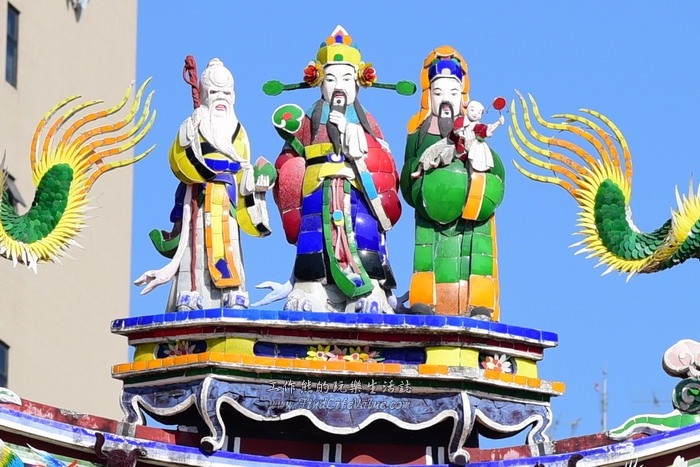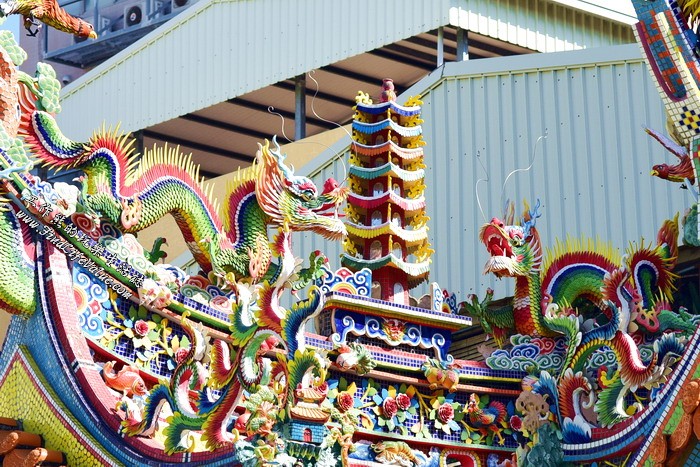Many tourists visiting Taiwan for the first time, especially in cities like Tainan or Lukang, are inevitably captivated by the country's temple culture and its splendid architectural features. Particularly, the roof decorations on Taoist temples in Taiwan are adorned with various intricate designs.
Three Stars of Happiness (Fu), Prosperity (Lu), and Longevity (Shou)
Fu (福): Represents happiness and wealth. The figure is often portrayed as an elderly man holding a yuanbao or ruyi, wearing an official's hat, and sporting a long black beard.
Lu (祿): Represents many descendants, fame and fortune. Typically depicted as an elderly man holding a child, wearing a kerchief around the head, and also with a long black beard.
Shou (壽): Represents longevity. The figure usually holds a cane in one hand and a longevity peach in the other, with sparse or completely white hair and a white beard.
In addition to the Three Stars of Happiness, Prosperity, and Longevity, there are also two other common roof decorations: Twin Dragons Paying Homage to the Pagoda (also known as "Twin Dragons Guarding the Pagoda") and Twin Dragons Guarding the Pearl (also known as "Twin Dragons Playing with the Pearl").
Twin Dragons Paying Homage to the Pagoda
"Twin Dragons Paying Homage to the Pagoda" is usually placed in the center of the roof of the main hall, symbolizing the protection of the Buddha and important scriptures.
The "Pagoda" is actually a concept derived from Indian Buddhism, where a pagoda often symbolizes a sacred relic or treasure. According to legend, the Chinese people trace their ancestry back to the Yellow Emperor, who transformed into the "Chinese Dragon." Throughout history, Chinese people have held dragons in high esteem, and emperors have claimed to be the incarnation of dragons, linking themselves to the celestial order. Therefore, the Chinese dragon has always been a symbol of nobility and power. The elevated status of the dragon in the minds of the Chinese people is unparalleled by any other creature. Hence, using twin dragons to protect a sacred pagoda is quite extraordinary.







No comments:
Post a Comment